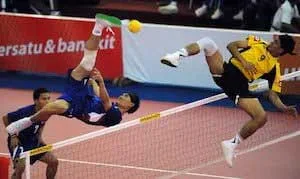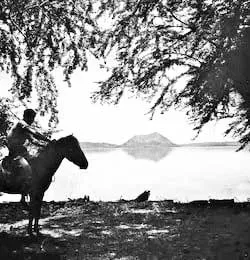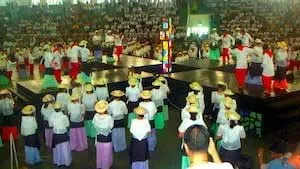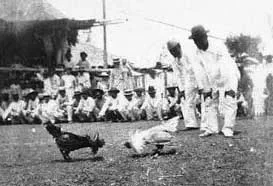6 Batangueño Amusements to Pass Time in 1916
Boredom is, by and large, no longer a concern for most contemporary Batangueños. There are large malls in the province which people can visit to pass the time. Even those who prefer to stay at home have a glut of channels to choose from if they can afford cable television. There are also social media and the Internet, where one can spend hours upon hours without even having to leave the comforts of one’s bed or couch.
Conditions in the province were far different back in 1916, as described by one Juan V. Pagaspas in a paper entitled “Native Amusements in the Province of Batangas.” Pagaspas described Batangas as basically a “commercial and agricultural province,” and that the people “raised mostly annual crops.” Between harvests, after tending to their crops and livestock, people found various ways to amuse themselves.
These he enumerated and described in his paper:
1. Holding of Dances
The bodily movements we call dance is one of humankind’s earliest activities. There are even those who have proposed that dance predated the invention of written languages as a way to hand down stories from one generation to the next1. In Batangas in 1916, natives held dances not just to pass the time but also as social events.
The favorites were, according to Pagaspas, the fandango and the soble (subli). He said that he was aware that there were those who said that the fandango was of Spanish origin; but also that it had been modified to the extent that it was already a native dance. He made no mention of the use of candles, however, as is done in the “fandango sa ilaw.” The soble, meanwhile, was a purely native dance according to Pagaspas, frequently held “in connection with a birth ceremony, marriage or death.”
2. A Game Called “Pata”
Pagaspas described the “pata” as a piece of wood almost semi-circular in shape. The game itself involved two players trying to hit pieces of wood twenty meters away with the “pata,” with points awarded for hitting the pieces of wood. The game was popular and drew many spectators. Pagaspas wrote, “This game is usually done on Sunday when everybody can take rest, so that there can be a great number of spectators. The enthusiasm accompanying “pata” is about the same as that accompanying baseball.”
 |
| In 1916, Batangueños played a game similar to but not the same as sepak takraw. Image credit: Leverade.com. |
3. Sipa
In the sixties when I was a small boy, the version of “sipa” we played was not dissimilar to a football drill called “keepy-uppy,” i.e. preventing the ball from falling to the ground by continuously kicking it upwards. In “sipa,” we used a bundle of rubber bands bound together. The version Pagaspas described was slightly different – a team game.
“Each team is composed of two persons opposite each other,” he wrote. “The team that gets the most kicks to the ball without letting it drop to the ground wins.” The ball itself was made of rattan, “the size of which is little bigger than an ordinary ball used in baseball.”
The game, according to Pagaspas, was popular not just in Batangas but likewise in other provinces. No mention was made of a net to separate the players, so while similar, this could not have been the popular Malay game sepak takraw2.
 |
| Image credit: University of Wisconsin Milwaukee. Batangas was home to the best horses in the Philippines. |
4. Horse racing
Pagaspas described Batangas as “being the home of the best horses in the Philippines.” Thus, professional horse racing was among the favorite pastimes of Batangueños of the era. Pagaspas was careful to note, however, that the sport was more commonly followed by what he called the “intelligent class.” He was probably referring to the moneyed and, therefore, educated citizens of the province.
5. The Harana or Serenade
When I was a teenager and my family had just moved to our new home a kilometer or so from the air base where I grew up, I used to see bands of young men with one or two carrying a guitar. This was already in the early seventies, but I instinctively knew that the young men were on their way to or just came from a harana or the serenade.
In 1916 according to Pagaspas, the harana was done in Batangas “at midnight usually when the moon is bright…” The harana was done by a group of young men who brought along with them a “violin, guitar, banduria and other musical instruments… After playing two or three times, one of them will sing a song, a pure Tagalog song usually very sentimental…” The harana was, of course, part of the courtship ritual; and many young women considered it a great honor to be serenaded every night.
6. Cockfighting
Finally, and as if I really need to mention this, Pagaspas wrote that Batangueños in 1916 were very fond of cockfighting, as many continue to be in the present day. Raising fowl for gaming supposedly dates back to as much as six thousand years ago, but was first observed and documented in the Philippines by Antonio Pigafetta, Magellan’s chronicler3. Pagaspas noted that cockfighting was so “common and obvious to any reader that it is not necessary at all for me to describe it here.”
2 The modern game sepak takraw was first documented in 15th century Malacca. There is every likelihood that the concept for the game, or at least the variant that became popular among Filipinos, came from the Malay Peninsula. “Sepak Takraw,” Wikipedia.
3 “Cockfight,” Wikipedia.
4 The so-called “amusements” enumerated in this article from “Native Amusements in Batangas,” written in 1916 by Juan V. Pagaspas. The paper is part of the H. Otley Beyer Collection at the National Library of the Philippines Digital Collection.


